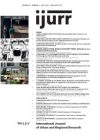This article traces some of the history of and logic behind the automation of weapons systems in relation to their planned deployment as an integral element of ‘homeland security’ in the US after the September 11th attacks. We focus primarily on unmanned combat air vehicles that have long been part of the Air Force’s R&D plans, but have now apparently found an event that justifies their production and deployment. What, we wonder, will be the effects on the urban landscape by using unmanned vehicles capable of ‘intelligently’ selecting a target and firing upon it, especially when the technology that allows these weapons systems to find the target as satellite coordinates relies on the same information technology that provides the infrastructure for ‘smart’ communities, and are already deployed in virtually all urban settings. By exploring the logic of speed and surprise that has driven the increased move toward and reliance on automated and intelligent weapons systems, we reveal how the arguments used in favor of developing and deploying such weapons systems also work as arguments against them. The technology that makes a weapons system intelligent, for example, also means that it has to be capable of choosing the wrong target, hence its ‘intelligence’. Similarly, the need to control the element of surprise has its logical end in the pursuit of the ultimate hidden vantage point, exemplified by the dark side of the moon. The technology and logic of the current ‘War on Terror’ fits neatly into already extant long–range military strategic planning, and could have a massive impact on the shape of urban environments in the immediate and distant futures.
Details
Written by:
Ryan Bishop, John Phillips
Digital Object Identifier (DOI)
10.1111/1468-2427.00405
About DOI
Read full article as PDF
Read full article as HTML
See the references for this article
